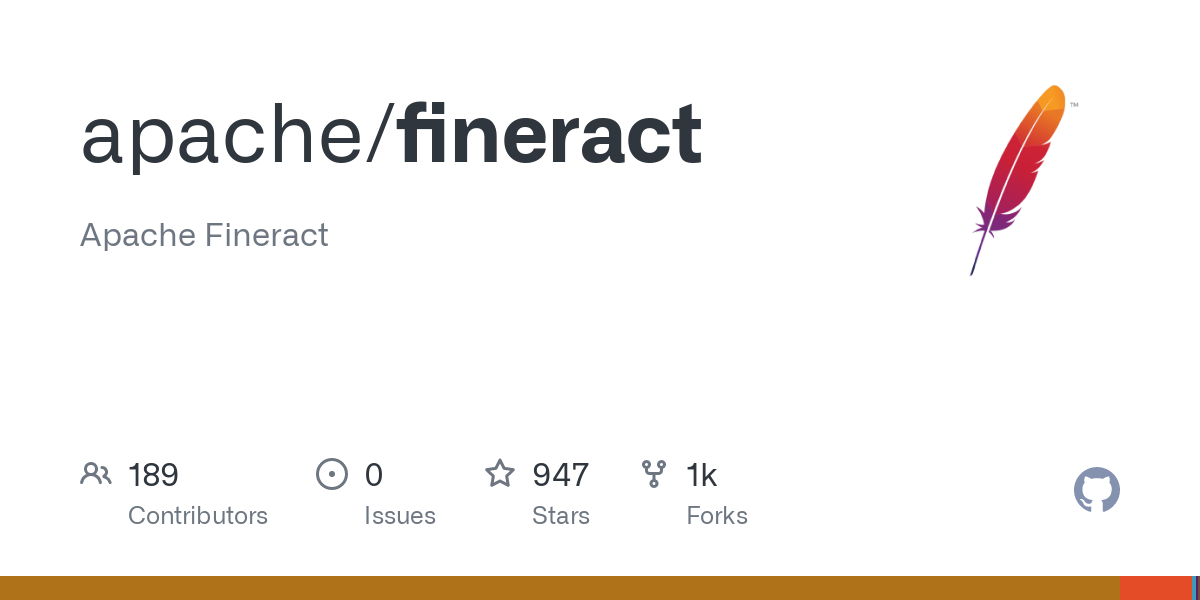What is “open source software”?
The term open source refers to things people could modify and share; they are accessible to the public. Open-source software is the software that has visible source codes for anyone to inspect, modify and enhance.
Open source does not mean free:
Let us break this myth that “Open source software is free.” It is tricky to understand as it depends on what defines the term “free” over here. According to the Open Systems Interconnection (OSI) definition, the word “free” means the sense of providing freedom to the ones who use it.
However, if you lean towards the economic side and think of the long-term costs of this software, then you must have brought the Adage in mind “There ain’t no such thing as a free lunch.” So even if you are not paying the upfront now, you may have to encounter the software maintenance expenses.
Section 1 – Leading open-source banking software:
- Apache Fineract
Apache Fineract is open-source software that provides reliable, robust, and affordable financial services and solutions to entrepreneurs. Apache Fineract can be deployed in any environment, whether cloud or on-premises; it supports front end interfaces online and offline. It is best known for its flexibility to support any product, service or lending methodology. Apache provides client data management, loan and portfolio management for all sizes of the organisation under it. Fineract 1.x is a matured platform with open APIs, while Fineract CN is a cloud-native that supports open banking APIs. Fineract 1.x compares well to other core banking systems and draws requirements from credit unions. You can look into the source code for the software here.

The Mifos Initiative is a U.S.-based non-profit supporting and collectively leading the open-source Mifos X project. Founded in October 2011, the organisation encompasses a community of financial service providers, technology specialists, financial services experts and open source developers working together to grow the Mifos X open-source platform for financial services. Its goal is to speed the elimination of poverty by enabling financial service providers to effectively and efficiently deliver responsible financial services to the world’s 2.5 billion poor and unbanked. You can find the source code for the software here.
https://github.com/openMF
3. My Banco
My Banco is one of the most popular open-source core banking software known for effective customer management and transaction management. Our solutions are scalable and help you remove older technology to speed up your system. Xbank is the cross-bank communication platform allows more messages to be transferred between the banks and other systems. To know the processing of the software, you can refer to its source code.
https://github.com/mybanco/mybanco
4. Octopus
Octopus Microfinance suite is open-source software that is available to the community of Microfinance institutions. To get a better understanding of the processing of the software, you can hover to their source code here.
https://github.com/SiddharthMishraPersonal/OpenCBSWPF
Section 2 – Pros of Open Source Banking Software
Open source Banking Softwares mainly benefits the tiny financial institutions that have limited usage of facilities. Some fundamental advantages that open source offers over proprietary solutions are:
Flexibility:
Open-source software enables technology agility typically by providing multiple ways to solve the problems. It helps your organisation or institutions from getting blocked due to any incapability.
Lesser cost of ownership:
Open-source software is much more cost-effective when compared with proprietary solutions. Open-source software gives enterprises the ability to start small and then scale, especially budget-challenged ones.
Ability to start small
With Open source software, you can start with a community version and then expand to a commercially supported solution for your institution. You have a variety of options and alternatives to pick the one that works well for your organisation.
Section 3 – Cons of Open Source Banking Software
Security and Compliance:
It is simple to get why open source software lacks security. A source code of the software available publicly makes the shield more vulnerable. Hackers are always on the lookout to spot security loopholes and breach into the system.
Risk of failure to comply with the licenses
The open-source software is also distributed under different licenses, and your data could be exposed to the world, depending on the permissions you handle. In addition to these, you might have to lose the ownership of the new project you created using open source software if you integrate an Oss with other proprietary software.
No Support and Risk of Discontinuity
Open sources are a great way to bring innovative ideas into your open source community; however, much immature open-source software lacks community backing. It would help if you were careful when selecting open-source software; this is mainly because many projects in the market get abandoned.
Hidden costs
Open-source software is not free of cost. Along with the maintenance charges, There are many other expenses that you will face in the usage of the open-source software. These include the fee to appoint an in-house tech team for support, new hardware setup costs, customisation costs of the software, and many more.
Section 4 – Few Proprietary Software Alternatives
Having read the pros and cons of Open source software, you can opt for the best option suited for your business. Here are some alternatives for open-source banking software to ease your decision-making process. The top software is listed below:
Year founded: 2012
Headquarters: Wilmington, NC
nCino is the worldwide leader in cloud banking. The nCino Bank Operating System® empowers financial institutions with scalable technology to help them achieve revenue growth, greater efficiency, cost savings and regulatory compliance. In a digital-first world, nCino’s single digital platform enhances the employee and client experience to enable financial institutions to more effectively onboard new clients, make loans and manage the entire loan life cycle, and open deposit and other accounts across lines of business and channels. Transforming how financial institutions operate through innovation, reputation and speed, nCino works with more than 1,200 financial institutions globally, whose assets range from $30 million to more than $2 trillion.
Founded: 2010
Headquarter: Bangalore, India
Finflux is a cloud lending platform to accelerate lending business transformation. Our vision is to create affordable and equitable financial access to individuals and businesses around the world. Our product offering includes loan origination, loan management, financial accounting, marketplace integration, app-based lending, alternative data-based credit scoring, dashboards, reporting and analytics.
Finflux customers include non-banking financial institutions (NBFC), Microfinance, SACCOs, Banks, FIs, Fintechs, Business Correspondents, Aggregators in the origination process, Agent networks and many more. We enable financial institutions to stay ahead in their business by providing next-generation digitisation, workflow automation and secure lending products.
Year founded: 2014
Headquarters: Austin, Texas
The turnKey lender is a global unified lending management leader that designs and develops award-winning software products that automate the lending process. The AI software is rapidly gaining traction within the regions of the United States and the European Union. Many lenders are already using the company’s solution that ranges for all sizes of businesses.
Headquarter: Boston MA.
Founded: 2017
It is among the fastest-growing fintech companies that use data to transform the decision-making processes of banks and credit unions. Many big financial institutions have put their data to work using the platform to ease loan origination and account creation.
Headquarter: Munich Germany
Founded: 2007
fidor is a banking platform that is known for its social and human touch to its services. fidorOS is a hassle-free platform that quickly and easily provides ideas and management to your digital projects and boosts your performance.
Founded: 2006
Headquarter: Braintree, MA
Geezeo is a well-designed and proven platform to deliver the best banking experience to its customers. Geezeo is an integrated platform that supports over 500+ forward-thinking banks and credit unions to date. It is known for its unmatched data analytics that helps you create the best possible experience for the customers.
Conclusion
All these software are known for their excellent performance management and services to their customers; people could easily opt for the best-suited software for their business. However, we recommend you go through all the licences, terms and conditions mentioned in them before starting with them.
Image credit – https://unsplash.com/photos/Skf7HxARcoc

